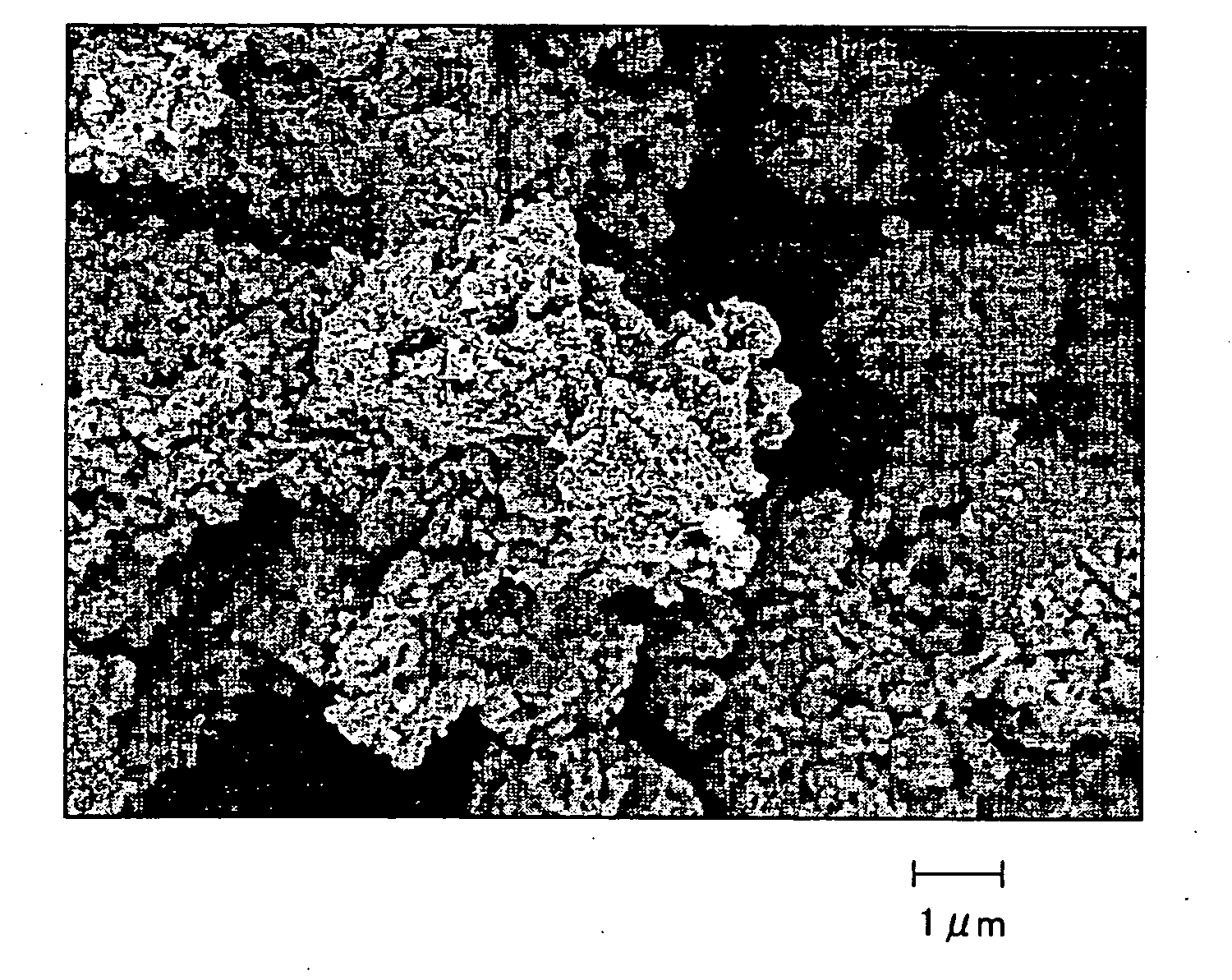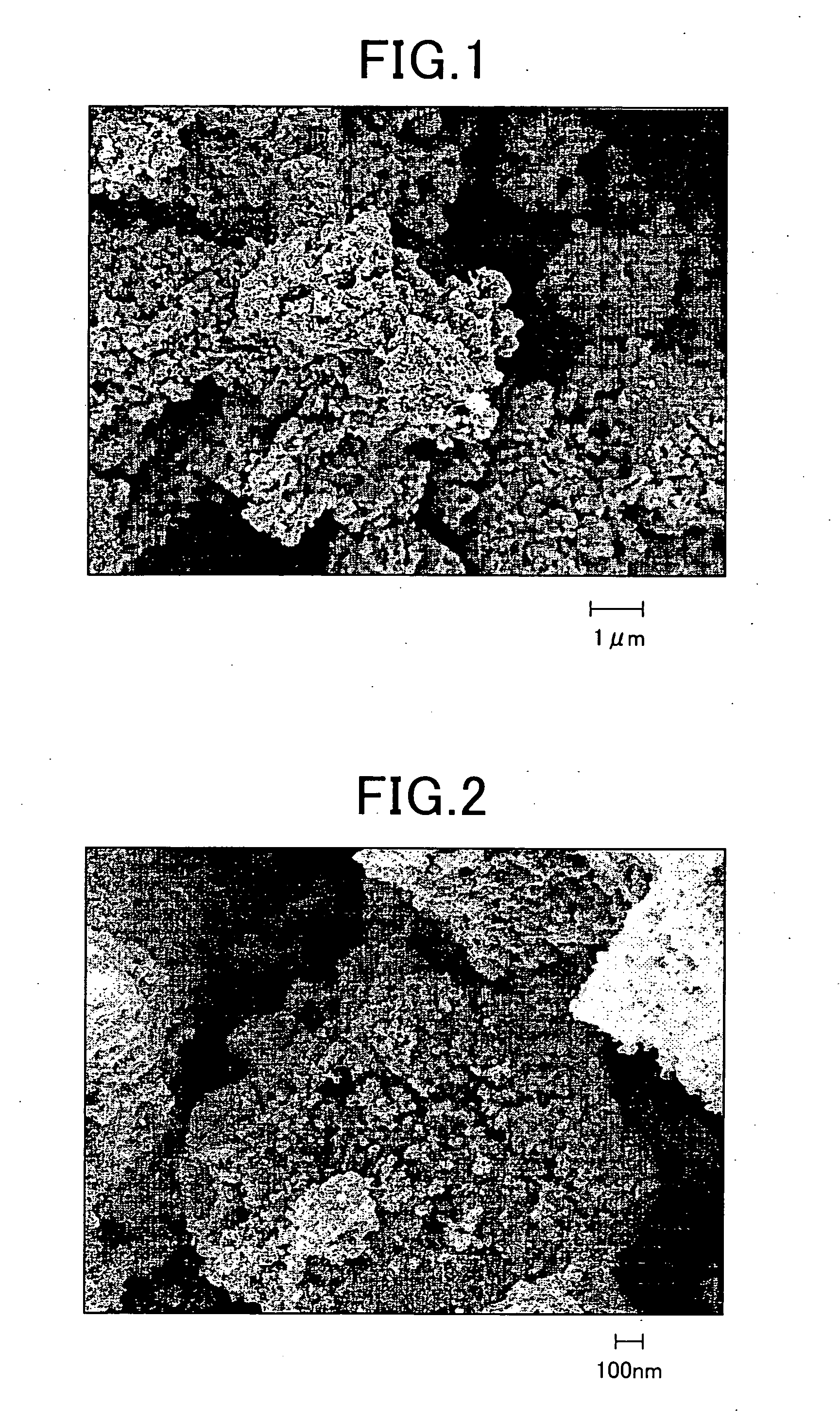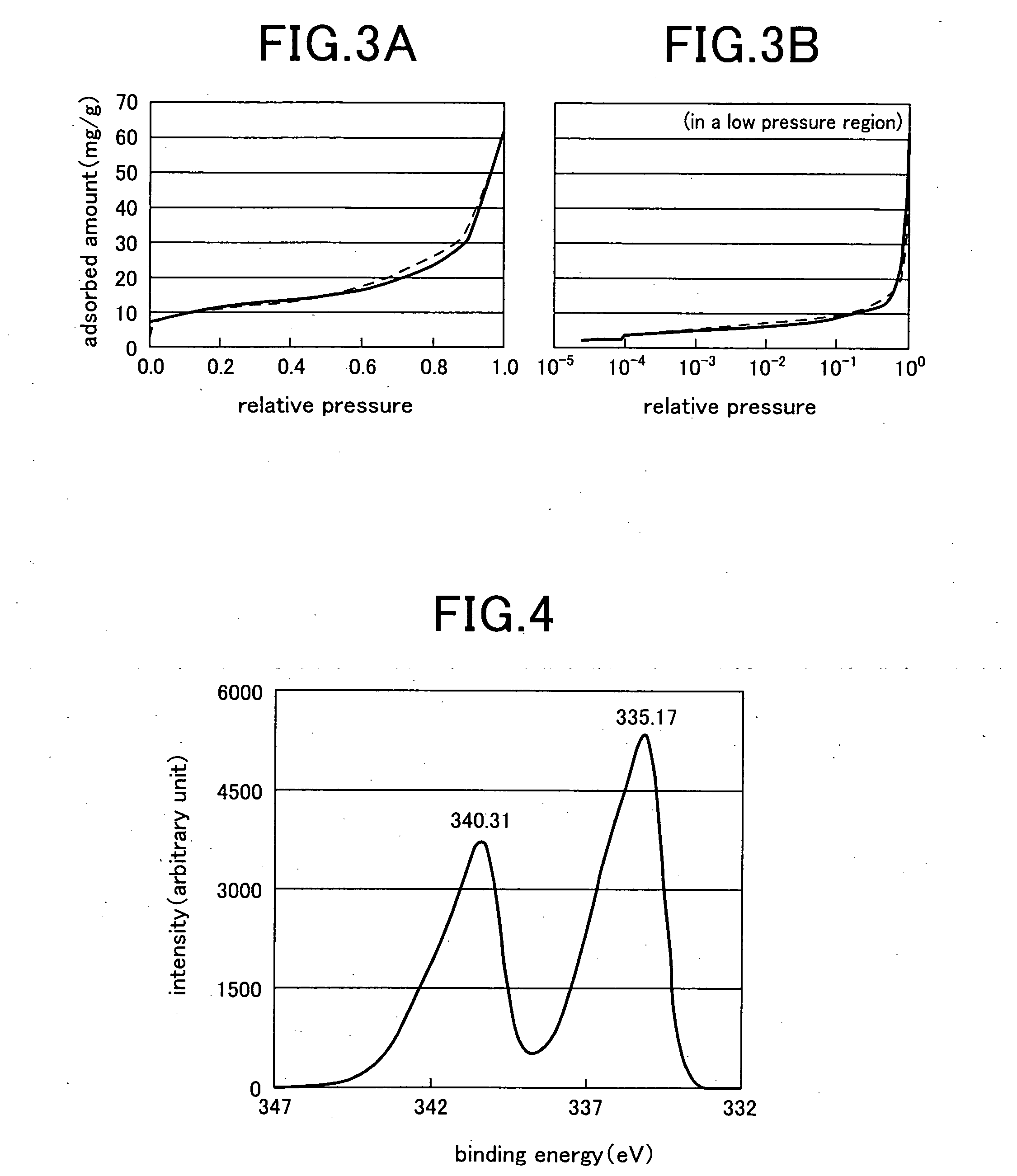Micro-porous noble metal material and method for preparation thereof
a noble metal and micro-porous technology, applied in the field of noble metal porous bodies, can solve the problems of hardly realized nano-pore structure in sintered bodies and the coalescence of noble metal atoms, and achieve the effect of high surface activity
- Summary
- Abstract
- Description
- Claims
- Application Information
AI Technical Summary
Benefits of technology
Problems solved by technology
Method used
Image
Examples
example 1
[0031] Silica (offered as “fine seal X-37” by Tokuyama Corporation) of 20 μm in averaged primary particle size with purity of 94.43% was weighed, and 184 mg silica was put in a vacuum vessel. The silica was heated 2 hours at 150° C. in a vacuum atmosphere of 0.133 Pa to vanish adsorbed water and gaseous components from surfaces of silica particles. Thereafter, a palladium acetate solution, which was prepared by dissolving 987 mg palladium acetate in 30 ml acetone, was poured in the vacuum vessel and stirred 2 days in an open air so as to adsorb palladium acetate to silica particles.
[0032] After 2 days-stirring, the vacuum vessel was held as such at a room temperature and then re-evacuated for vaporization of acetone (as a solvent). The re-evacuation was continued 6 hours, so as to concentrate and exsiccate the nano-silica aggregate impregnated with palladium acetate.
[0033] Palladium acetate was reduced to metallic palladium by heating the dry nano-silica aggregate in a vacuum atmo...
example 2
[0039] The same silica (370 mg) as in Example 1 was subjected to vacuum drying for removal of adsorbed water and gaseous components, vacuum impregnated with a solution, which was prepared by dissolving 4.9 g platinum chloride hexahydrate in 30 ml acetone, and stirred 48 hours to adsorb the platinum chloride hexahydrate to silica particles. Thereafter, the impregnated silica was conditioned to a dry platinum chloride hexahydrate / nano-silica aggregate by 6 hours-vacuum suction at a room temperature for removal of acetone.
[0040] The dry aggregate was heated 2 hours at 450° C. in a vacuum atmosphere, so as to convert platinum chloride hexahydrate to metallic platinum by pyrolysis. Adsorption of metallic platinum to each silica particle without filling pore spaces was recognized by FE-SEM observation of the heated aggregate.
[0041] The metallic platinum / nano-silica aggregate was then dipped 7 days in a 0.1 N—NaOH solution for dissolution of silica particles, washed with distilled water ...
example 3
[0042] The porous noble metal bodies prepared by Examples 1 and 2 were evaluated by hydrogenation of ethylene as follows: 10 mg each of the noble metal body of Example 1, the noble metal body of Example 2 and platinum black were individually put in quartz tubes. A gaseous mixture of ethylene and hydrogen at a ratio of 1:1.8 was fed into each quartz tube, which was held at 0° C., at a flow rate of 50 ml / minute. After the gaseous mixture was reacted with the fillers, a reaction product was analyzed by gas chromatography. Analytical results shows that hydrogenation of ethylene to ethane was promoted in any case. However, the inventive noble metal bodies exhibited activity, which was judged from a volume of the reaction product, fairly superior to activity of platinum black, as shown in Table 1.
TABLE 1Activity of Porous Bodies evaluated by Hydrogenation of EthyleneA Pd porousA Pt porousPlatinum blackKind of Porous Bodybody (Ex. 1)body (Ex. 2)(conventional)Activity2563.213.1(mmol / minut...
PUM
| Property | Measurement | Unit |
|---|---|---|
| particle size | aaaaa | aaaaa |
| specific surface area | aaaaa | aaaaa |
| specific surface area | aaaaa | aaaaa |
Abstract
Description
Claims
Application Information
 Login to View More
Login to View More - R&D
- Intellectual Property
- Life Sciences
- Materials
- Tech Scout
- Unparalleled Data Quality
- Higher Quality Content
- 60% Fewer Hallucinations
Browse by: Latest US Patents, China's latest patents, Technical Efficacy Thesaurus, Application Domain, Technology Topic, Popular Technical Reports.
© 2025 PatSnap. All rights reserved.Legal|Privacy policy|Modern Slavery Act Transparency Statement|Sitemap|About US| Contact US: help@patsnap.com



